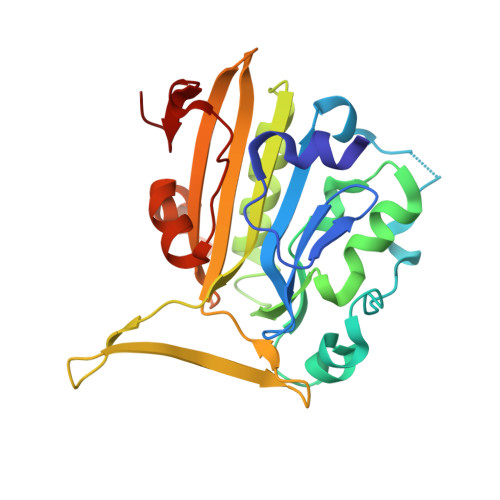Oxidative Stress Impairs Cell Death by Repressing the Nuclease Activity of Mitochondrial Endonuclease G
Lin, J.L.J., Nakagawa, A., Skeen-Gaar, R., Yang, W.Z., Zhao, P., Zhang, Z., Ge, X., Mitani, S., Xue, D., Yuan, H.S.(2016) Cell Rep 16: 279-287
- PubMed: 27346342
- DOI: https://doi.org/10.1016/j.celrep.2016.05.090
- Primary Citation of Related Structures:
4QN0 - PubMed Abstract:
Endonuclease G (EndoG) is a mitochondrial protein that is released from mitochondria and relocated into the nucleus to promote chromosomal DNA fragmentation during apoptosis. Here, we show that oxidative stress causes cell-death defects in C. elegans through an EndoG-mediated cell-death pathway. In response to high reactive oxygen species (ROS) levels, homodimeric CPS-6-the C. elegans homolog of EndoG-is dissociated into monomers with diminished nuclease activity. Conversely, the nuclease activity of CPS-6 is enhanced, and its dimeric structure is stabilized by its interaction with the worm AIF homolog, WAH-1, which shifts to disulfide cross-linked dimers under high ROS levels. CPS-6 thus acts as a ROS sensor to regulate the life and death of cells. Modulation of the EndoG dimer conformation could present an avenue for prevention and treatment of diseases resulting from oxidative stress.
- Institute of Molecular Biology, Academia Sinica, Taipei, Taiwan 11529, ROC.
Organizational Affiliation:

















